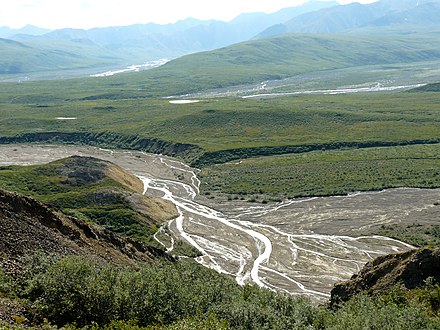Secernosaurus
Secernosaurus (meaning "severed lizard") is a genus of herbivorous dinosaur. Secernosaurus was a hadrosaur, a "duck-billed" dinosaur which lived during the Late Cretaceous.
Secernosaurus and its close relatives lived in South America, unlike most hadrosaurs, which lived in the Laurasian continents of Eurasia and North America. It has been suggested that the ancestors of Secernosaurus crossed into South America when a land bridge temporarily formed between North and South America during the Late Cretaceous and allowed biotic interchange between the two continents.
The holotype of Secernosaurus koeneri was collected in 1923 as part of an expedition by the Field Museum led by J. B. Abbott. However, the specimen was not studied until the 1970s.[1] In 1979, Brett-Surman named Secernosaurus. Though hadrosaurid specimens from South America had been described before, Secernosaurus koeneri was the first species of South American hadrosaurid to be formally named. The genus name Secernosaurus means "separated reptile"[2] and comes from the Latin verb sēcernō, meaning to sever or divide, in reference to its geographic location separated from Laurasian hadrosaurs. The species name S. koerneri honors Harold E. Koerner.[3] The holotype of Secernosaurus koerneri is FMNH P13423,[1] a partial skeleton from the Lago Colhué Huapi Formation of Chubut province, Argentina.[4]
In 2010, Albert Prieto-Marquez and Guillermo Salinas argued that Kritosaurus australis was synonymous with Secernosaurus koeneri.[1] However, in 2015, Rodolfo Coria noted differences between the two, and suggested their taxonomy needed reevaluation.[5] In 2022, the two species were recognized as separate and the genus Huallasaurus was established for Kritosaurus australis.[6]
Secernosaurus may have been small for a hadrosaurid. The type specimen pertains to an individual approximately 5 m long, but the maturity of the specimen is uncertain.[5]
Phylogenetic analyses have found Secernosaurus to be a member of the hadrosaurid tribe Kritosaurini within the subfamily Saurolophinae. North American animals such as Kritosaurus and Gryposaurus are also part of this clade.[1] Rozadilla et al. (2022) recovered all South American saurolophines to group together within a single clade consisting of Secernosaurus, Huallasaurus, Kelumapusaura, and Bonapartesaurus.[6] In the 2023 description of the South American hadrosauroid Gonkoken, Alarcón-Muñoz et al. named the Austrokritosauria, a clade closely related to kritosaurins, consisting of all the South American saurolophines. The results of their phylogenetic analyses of Saurolophinae are displayed in the cladogram below:[7]
